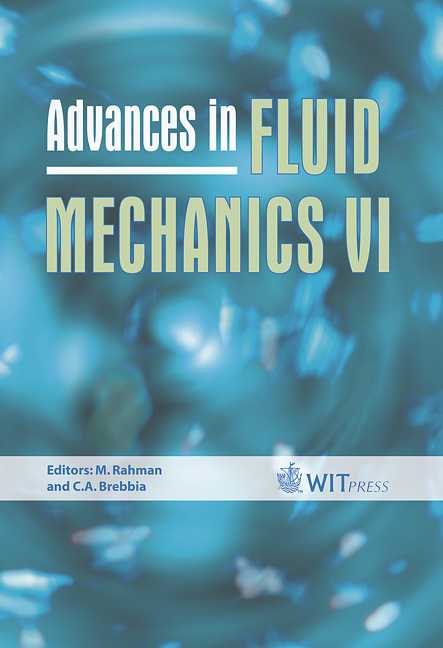Numerical Results For Coagulation Equation With Bounded Kernels, Particle Source And Removal
Price
Free (open access)
Transaction
Volume
52
Pages
9
Published
2006
Size
542 kb
Paper DOI
10.2495/AFM060351
Copyright
WIT Press
Author(s)
C. D. Calin, M. Shirvani & H. J. van Roessel
Abstract
Numerical approaches for the coagulation equationwith source and removal terms, and kernels that are bounded independently of the particle size, are investigated. A few classes of exact solutions are provided. Keywords: coagulation, polymers, exact solution, source, removal, numerical solution. 1 Introduction There is considerable literature on the mathematical theory of coagulation, deterministic and stochastic, discrete and continuous, beginning with the pioneering work of Smoluchowski in 1917 on modelling binary coalescence of particles. For a very comprehensive survey of work up to 1970, including applications, different derivations of the equation from physical assumptions, and discrete versions of the equation, see Drake [1]. The pioneering works of Melzak [2] (on cloud formation) include some of the earliest applications of the theory, and more applications can be found in Drake [1], Lee [3], Krivitsky [4]. The presence of external particle sources, and the removal of particles from the system, however, has not received a great deal of mathematical attention, the work of Simons [5] being a notable recent exception. In Shirvani and Van Roessel [6], the discrete version with constant kernel and source terms is investigated. Laurenc¸ot [7] and Norris [8] are two comprehensive recent studies of coagulation/ fragmentation for unbounded kernels (butwithout source and removal effects). An example of application to the coagulation equation is in the manufacturing of aluminiumalloys. Here, molten metal is kept in a holding furnace for several hours while particles of titanium diboride are added for further solidification and casting.
Keywords
coagulation, polymers, exact solution, source, removal, numerical solution.





